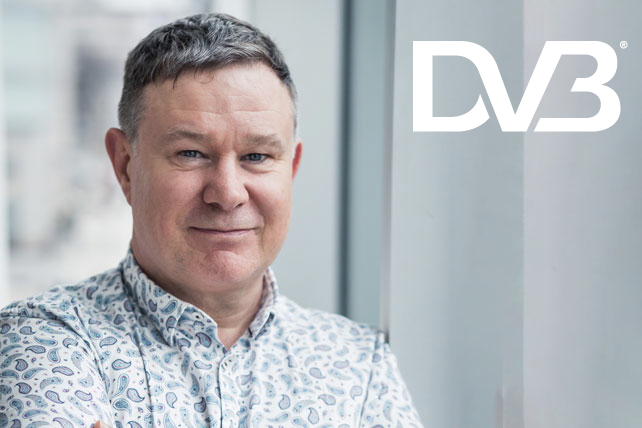
Next generation or paradigm shift?
Peter MacAvock (EBU), Chair of the DVB Project
Because DVB doesn’t have a “3” after it, you might think it’s not as good as something that does. After all, DVB-T2 can only be a second-generation technology; right? It’s a bit more complicated than that.
Although ATSC 3.0 claims to be an IP-only system, it is also still fundamentally a broadcast system, relying on broadcast networks. Sure, those broadcast networks carry IP, but IP isn’t the internet. DVB’s latest suite of solutions – with DVB-I and streaming technologies at their heart – are about an internet- first DVB. This is subtly different but important distinction from an IP-centric approach.
A long time ago, we said in DVB that if there were ever to be a DVB-T3, it would be a hybrid system combining bidirectional networks with broadcast to exploit the opportunities offered by the fundamental asymmetry of media services. But DVB-T2 is still state of the art: we have just issued an update to the specification to incorporate a clarification and to make it interoperable with the GSE-Lite profile of DVB-GSE (generic stream encapsulation), that is used for our new DVB Native IP solution that offers an alternative to the classic, and still very relevant, MPEG-2 Transport Stream.
Let us be clear, applications such as targeted advertising, service replacement, etc., touted as being possible only with IP-based systems, can all be done using DVB combined with HbbTV. These systems are already installed in every connected TV in Europe and beyond. Wouldn’t it be a shame to have to jettison existing equipment to make all these new features possible? Well, you don’t need to.
What about Brazil?
And what of the latest announcements from Brazil? There, the SBTVD Forum (standing for Sistema Brasileiro de Televisão Digital) has been targeting the development of its next generation digital terrestrial television system, a project they called, naturally, TV 3.0. Congratulations are due to them for managing their technology selection process so efficiently. There could be valuable lessons for DVB. The result there will be another broadcast-centric system. We’re pleased to see that a range of technologies fostered in DVB – core DVB-T2 technologies, next generation video codecs, DASH with low latency, etc. – were selected.
The thing is, though, these are components in an overall broadcast-centric system – it’s the internet-centric system approach that DVB has adopted that shifts the paradigm. At its centre is DVB-I.
Being honest, DVB-I was first conceived as being a way of replicating a broadcast-television viewing experience with online services. Studies done by Ofcom in the UK have shown that combined broadcast/internet service lists are a convenient way of managing a seamless user experience on a TV set for consumers who have access to broadcast and online. This could be particularly useful when managing a transition towards internet-based delivery, or away from classic DTT broadcast. Indeed, there’s a place for this in any market transitioning from one distribution technology to another, particularly where one of them is IP.
As Brazil proposes to migrate from its current first-generation system to its proposed third- (or is it fourth?) generation system, it could usefully deploy something like DVB-I to ease the transition for viewers.
Competition between standards bodies isn’t a DVB priority; it’s all about adapting to the challenges of a world dominated by internet-first companies and turning those that aren’t yet focused on this into ones that are. As some have pointed out, DVB’s much- lauded process, the cornerstone of the way in many standards-developing organizations work, needs to be revolutionized. Some important work is in preparation in DVB that will – hopefully – lead to the biggest shake-up since DVB was founded. Watch this space.
Peter MacAvock is the Chair of the DVB Project. He is also Head of Distribution Platforms and Services at the European Broadcasting Union.
This article first appeared in issue 59 of DVB Scene magazine.
